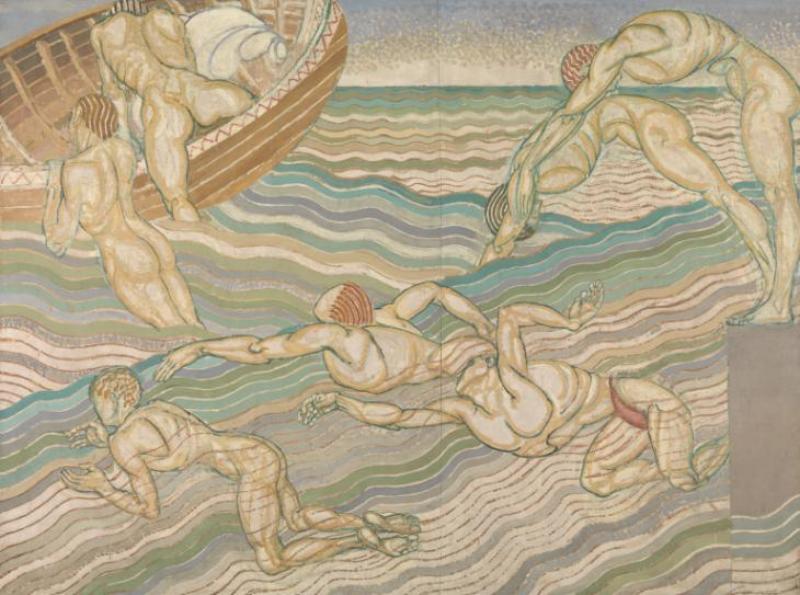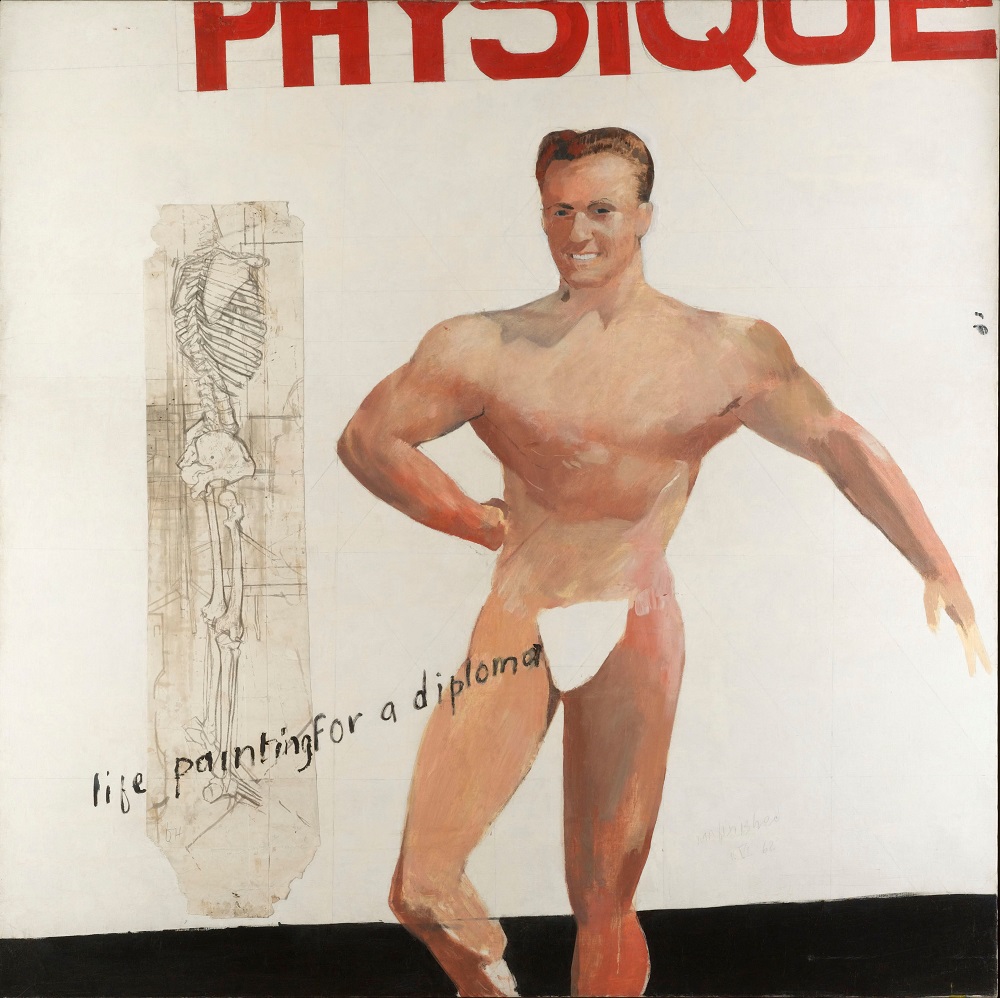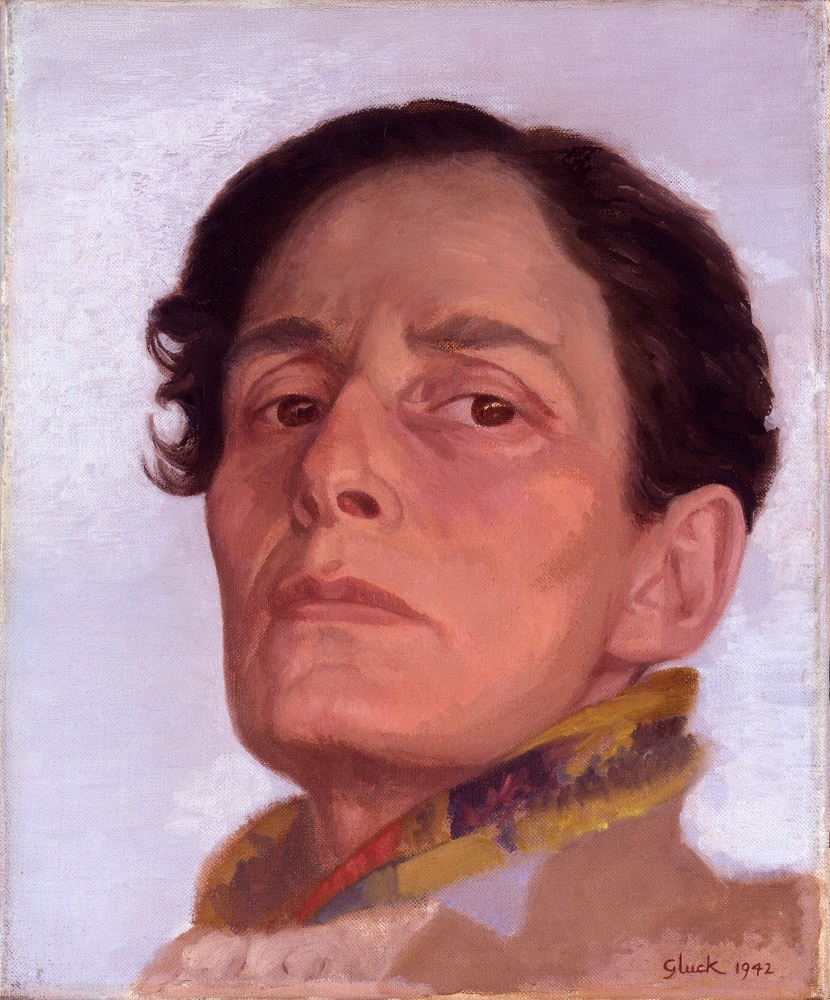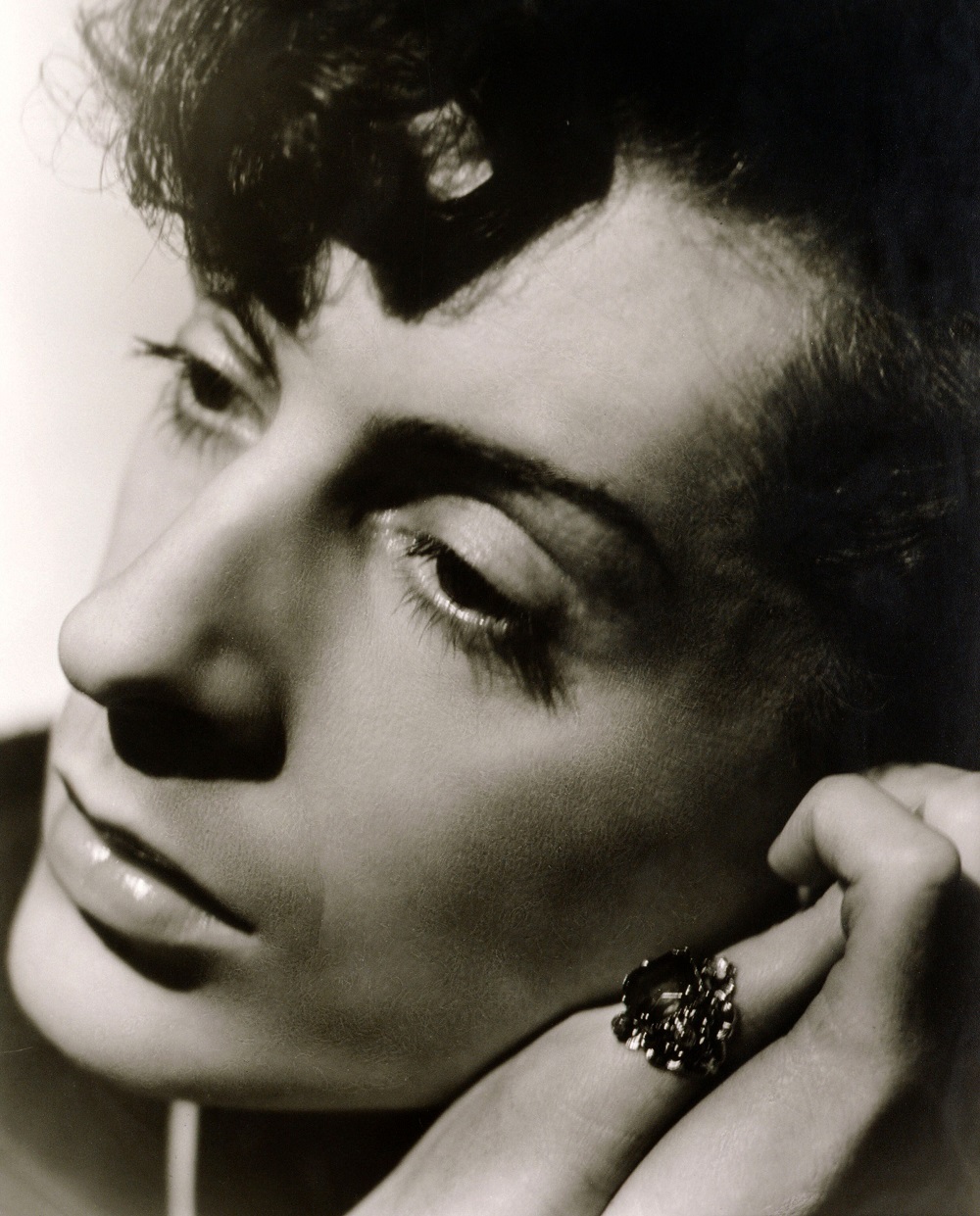Queer British Art 1861-1967, Tate Britain | reviews, news & interviews
Queer British Art 1861-1967, Tate Britain
Queer British Art 1861-1967, Tate Britain
A vital selective history in images, but is much of it great art - and does it matter?

"Good for the history of music, but not for music," one of Prokofiev's professors at the St Petersburg Conservatoire used to say of artistically dubious works which created a splash, according to the composer's diaries.
The dates are crucial: 1861, the starting point, was when the Offences Against the Person Act saw the abolition of the death penalty for sodomy, and in 1967 the Sexual Offences Act partly decriminalised acts between consenting adults in private and set the age of consent in England and Wales at 21. What it means in effect is a dreadful start to the exhibition and a reasonably flamboyant ending. Victorian ambiguities are represented by bad art: Simeon Solomon may have inspired a wonderful play by Neil Bartlett, A Vision of Love Revealed in Sleep, but I wouldn't give house room to his stuff in a first room noteworthy only for two of Wilhelm von Gloeden's more decorous Italian boys, and perhaps Henry Scott Tuke's studies of young male nudes, one of the few points in the show where we come close to anything that might be described as erotic. At the other end, there are two Hockneys representative of his early style – the most famous one, We Two Boys Together Clinging, 1961, is in the exhibition down the way in the same building – and two Bacons, of which the portrait putatively of his lover George Dyer is the more typical. Hockney's uncharacteristic Royal Academy diploma entry (pictured above, © Yageo Foundation) cues a case of muscle magazines in the centre of the room. Runners-up in several ways throughout the previous galleries include the celebrated library-book jackets reworked by Joe Orton and Kenneth Halliwell – I wasn't the only one laughing out loud at the budgie on the front of The World of Paul Slickey or "Fucked by Monty" as one of the new titles for works by Emlyn Williams. In the pencilled comments displayed in the final room, someone has asked when the Tate will be giving full shows to Keith Vaughan and Edward Burra. I heartily concur in the latter's case: the two canvases on display, Izzy Orts and Soldiers at Rye, are among the few absolute highlights of the exhibition.
At the other end, there are two Hockneys representative of his early style – the most famous one, We Two Boys Together Clinging, 1961, is in the exhibition down the way in the same building – and two Bacons, of which the portrait putatively of his lover George Dyer is the more typical. Hockney's uncharacteristic Royal Academy diploma entry (pictured above, © Yageo Foundation) cues a case of muscle magazines in the centre of the room. Runners-up in several ways throughout the previous galleries include the celebrated library-book jackets reworked by Joe Orton and Kenneth Halliwell – I wasn't the only one laughing out loud at the budgie on the front of The World of Paul Slickey or "Fucked by Monty" as one of the new titles for works by Emlyn Williams. In the pencilled comments displayed in the final room, someone has asked when the Tate will be giving full shows to Keith Vaughan and Edward Burra. I heartily concur in the latter's case: the two canvases on display, Izzy Orts and Soldiers at Rye, are among the few absolute highlights of the exhibition.
 Another comment asks "Where are the women? 10 per cent is not enough". There must be more than 10 per cent, and it's largely on display in Rooms Four and Five, after which what used, appallingly, to be called "the distaff side" more or less disappears. Dame Ethel Walker's large canvas of classical female nudes and semi-nudes The Excursion of Nausicaa, 1920, balances Duncan Grant's bathing boys deemed too "degenerative" a theme for its intended destination, Borough Polytechnic. Portraits of strong women abound – Gluck's self-portrait, used as the poster image (pictured above, © National Portrait Gallery), William Strang's Vita Sackville-West, a much needed dash of vibrant colour, and those of Dame Laura Knight. To my mind the finest portrait of all is Dora Carrington's of Lytton Strachey.
Another comment asks "Where are the women? 10 per cent is not enough". There must be more than 10 per cent, and it's largely on display in Rooms Four and Five, after which what used, appallingly, to be called "the distaff side" more or less disappears. Dame Ethel Walker's large canvas of classical female nudes and semi-nudes The Excursion of Nausicaa, 1920, balances Duncan Grant's bathing boys deemed too "degenerative" a theme for its intended destination, Borough Polytechnic. Portraits of strong women abound – Gluck's self-portrait, used as the poster image (pictured above, © National Portrait Gallery), William Strang's Vita Sackville-West, a much needed dash of vibrant colour, and those of Dame Laura Knight. To my mind the finest portrait of all is Dora Carrington's of Lytton Strachey.
Una Troubridge, who as Radclyffe Hall's partner was once described as "the bucket in the well of loneliness", surprises with an arresting 1912 plaster bust of Nijinsky as the protagonist in his Ballets Russes choreography of Debussy's Prélude à l'après-midi d'un faune. In these galleries of entertainers and worthies, the historical memento can be more powerful than the portrait – Noel Coward's dressing gown, the prison door from Reading Gaol reputedly that of Oscar Wilde's cell, which looks like a work of art alongside his portrait.
 Fortunately photographs by Angus McBean keep hold of the artistic ideal (one which appears much later, his study of Quentin Crisp pictured left, © Estate of Angus McBean/National Portrait Gallery, is perhaps the best of all) – though for a more adventurous photographic aesthetic, you might well be impressed by the surrealist work of Claude Cahun, a startling intrusion among the paintings of Room Five.
Fortunately photographs by Angus McBean keep hold of the artistic ideal (one which appears much later, his study of Quentin Crisp pictured left, © Estate of Angus McBean/National Portrait Gallery, is perhaps the best of all) – though for a more adventurous photographic aesthetic, you might well be impressed by the surrealist work of Claude Cahun, a startling intrusion among the paintings of Room Five.
Here, and throughout, you'll be studying the captions sometimes more carefully than the art, and occasionally more incredulously (could "Michael Field" really be the composite of an aunt and niece who became an item? That gives a kick beyond the Bloomsbury triangles to come). Ultimately, it doesn’t matter too much what Queer British Art really is, or how much the label comes to reassess past fluidities with present certainties. The main thing is that you’ll take away a few surprises, perhaps even revelations. And yes, as those comments at the end reveal, heterosexuals enjoy the show as well.
rating
Explore topics
Share this article
more Visual arts
 Stephen review - a breathtakingly good first feature by a multi-media artist
Melanie Manchot's debut is strikingly intelligent and compelling
Stephen review - a breathtakingly good first feature by a multi-media artist
Melanie Manchot's debut is strikingly intelligent and compelling
 Fantastic Machine review - photography's story from one camera to 45 billion
Love it or hate it, the photographic image has ensnared us all
Fantastic Machine review - photography's story from one camera to 45 billion
Love it or hate it, the photographic image has ensnared us all
 Yinka Shonibare: Suspended States, Serpentine Gallery review - pure delight
Weighty subject matter treated with the lightest of touch
Yinka Shonibare: Suspended States, Serpentine Gallery review - pure delight
Weighty subject matter treated with the lightest of touch
 Jane Harris: Ellipse, Frac Nouvelle-Aquitaine MÉCA, Bordeaux review - ovals to the fore
Persistence and conviction in the works of the late English painter
Jane Harris: Ellipse, Frac Nouvelle-Aquitaine MÉCA, Bordeaux review - ovals to the fore
Persistence and conviction in the works of the late English painter
 Sargent and Fashion, Tate Britain review - portraiture as a performance
London’s elite posing dressed up to the nines
Sargent and Fashion, Tate Britain review - portraiture as a performance
London’s elite posing dressed up to the nines
 Zineb Sedira: Dreams Have No Titles, Whitechapel Gallery review - a disorientating mix of fact and fiction
An exhibition that begs the question 'What and where is home?'
Zineb Sedira: Dreams Have No Titles, Whitechapel Gallery review - a disorientating mix of fact and fiction
An exhibition that begs the question 'What and where is home?'
 Yoko Ono: Music of the Mind, Tate Modern review - a fitting celebration of the early years
Acknowledgement as a major avant garde artist comes at 90
Yoko Ono: Music of the Mind, Tate Modern review - a fitting celebration of the early years
Acknowledgement as a major avant garde artist comes at 90
 Unravel: The Power and Politics of Textiles in Art, Barbican review - the fabric of dissent
An ambitious exploration of a neglected medium
Unravel: The Power and Politics of Textiles in Art, Barbican review - the fabric of dissent
An ambitious exploration of a neglected medium
 When Forms Come Alive, Hayward Gallery review - how to reduce good art to family fun
Seriously good sculptures presented as little more than playthings or jokes
When Forms Come Alive, Hayward Gallery review - how to reduce good art to family fun
Seriously good sculptures presented as little more than playthings or jokes
 Entangled Pasts 1768-now, Royal Academy review - an institution exploring its racist past
After a long, slow journey from invisibility to agency, black people finally get a look in
Entangled Pasts 1768-now, Royal Academy review - an institution exploring its racist past
After a long, slow journey from invisibility to agency, black people finally get a look in
 Barbara Kruger, Serpentine Gallery review - clever, funny and chilling installations
Exploring the lies, deceptions and hyperbole used to cajole, bully and manipulate us
Barbara Kruger, Serpentine Gallery review - clever, funny and chilling installations
Exploring the lies, deceptions and hyperbole used to cajole, bully and manipulate us
 Richard Dorment: Warhol After Warhol review - beyond criticism
A venerable art critic reflects on the darkest hearts of our aesthetic market
Richard Dorment: Warhol After Warhol review - beyond criticism
A venerable art critic reflects on the darkest hearts of our aesthetic market

Add comment